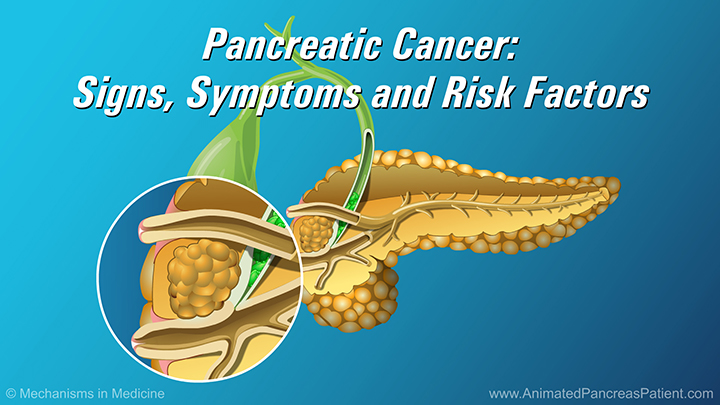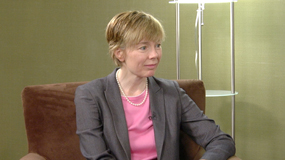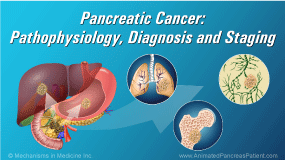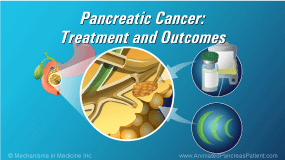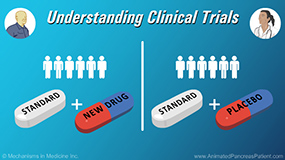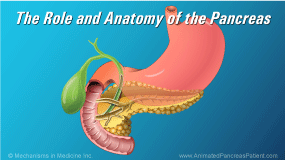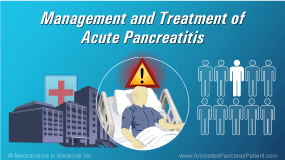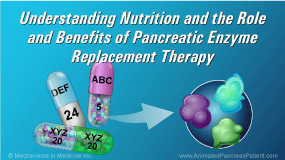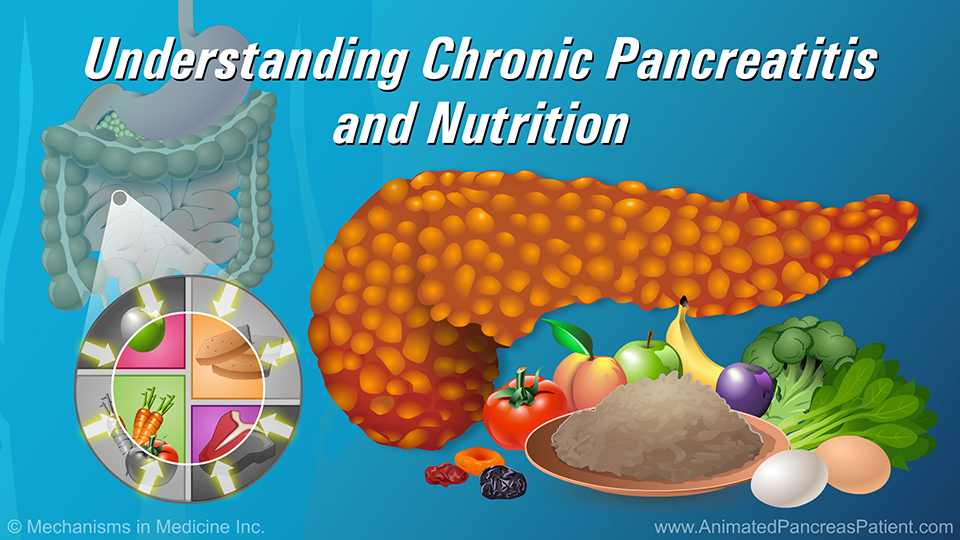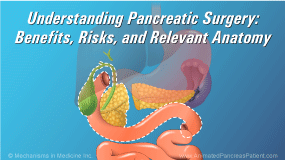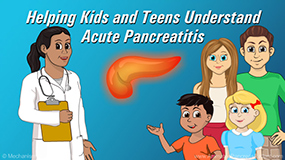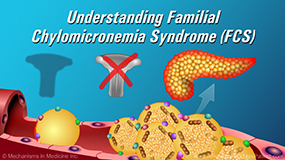Pancreatic Cancer: Signs, Symptoms and Risk Factors
*Please note: This slide set represents a visual interpretation and is not intended to provide, nor substitute as, medical and/or clinical advice.
Pancreatic cancer is the 9th most common cancer in women and 10th most common in men in the United States and rates have been increasing over the last 10 years. About 45,200 cases will be diagnosed in the United States in 2013.
The pancreas is a digestive-system organ located in the upper abdomen...
...that produces hormones to regulate blood sugar. The pancreas also releases digestive enzymes into the small intestine to break down food.
Anatomically the pancreas is divided into three regions: the head, the body and the tail.
Because there are few symptoms early on in the illness, and those that do develop are often non-specific, pancreatic cancer is often diagnosed at a late stage.
In a tumor arising in the head of the pancreas, common symptoms are jaundice (or yellowing of the skin and eyes), dark urine and pale stools and itchy skin. This is caused by tumors in the head of the pancreas that block bile from the liver from reaching the digestive system.
Some patients experience loss of appetite, weight loss, fatigue, and a general non-specific feeling of malaise.
If the cancer has spread, or if it is extensive, upper abdominal or back pain may be present.
Other symptoms include fullness after eating, change in bowel habits (such as loose bowel movements) and new onset or recent worsening of existing diabetes.
Symptoms vary a lot between patients.
Like most cancers, the risk of developing pancreatic cancer increases with age. As well, a family history of pancreatic cancer increases risk
...or other related cancers (such as colon, breast, ovarian and prostate cancer), also increase the risk.
Modifiable risk factors include cigarette smoking; a high-fat, low fiber diet; obesity; and working in a job that involves industrial chemicals or toxic metals. These exposures may increase your risk of developing the disease.
Contrary to popular belief, coffee and modest alcohol have not been linked to pancreatic cancer.
However, heavy, long-standing alcohol consumption has been linked to chronic pancreatitis in predisposed people, which is another condition that may increase the risk of pancreatic cancer.
Lifestyle changes can help reduce your risk of developing pancreatic cancer, although it is important to mention that no way of preventing the disease is currently proven.
Lifestyle changes include stopping smoking, maintaining a healthy weight, and reducing consumption of high fat foods. If possible, also avoid exposure to toxic chemicals.
For people at especially high risk, like those with a family history, screening programs help to try to identify the disease in its early stages, when prognosis is better.
The focus of this slide show are the signs, symptoms and risk factors of developing pancreatic cancer.
-
Share with family and friends:
Click here to take our SURVEY
Your feedback is important to us! We will use your feedback to develop future areas of content about pancreatic diseases which will help other patients, caregivers and families.


